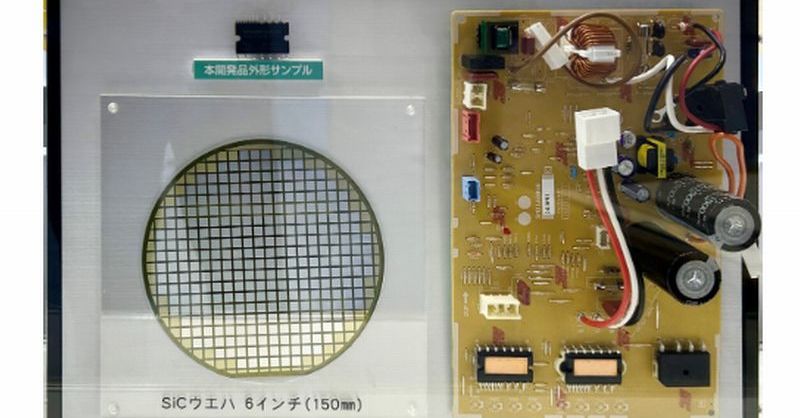Innovative SiC IPM: Cuts Air Conditioner Power Use by Up to 30%
Revolutionizing Cooling: Silicon Carbide Power Modules Deliver Significant Energy Savings
The quest for energy-efficient cooling solutions has led to a breakthrough in power electronics. A new generation of air conditioners featuring innovative Silicon Carbide (SiC) Integrated Power Modules (IPMs) is poised to dramatically reduce energy consumption and lower carbon footprints. Early tests show these systems boast power savings of up to 30%, representing a significant leap forward in the fight against climate change and soaring energy bills.
What are SiC IPMs and How Do They Work?
Silicon Carbide is a wide-bandgap semiconductor material offering superior performance compared to traditional silicon-based IGBTs (Insulated Gate Bipolar Transistors) used in most inverters. SiC IPMs incorporate several components – including SiC MOSFETs (Metal-Oxide-Semiconductor Field-Effect Transistors), gate drivers, and protection circuits – into a single, compact module. This integration simplifies design, reduces costs, and improves reliability.
Key Advantages of SiC IPMs in Air Conditioners:
- Higher Efficiency: SiC MOSFETs exhibit lower switching losses and higher operating frequencies than traditional silicon IGBTs, resulting in significantly improved energy efficiency.
- Smaller Size & Lighter Weight: The integrated design allows for smaller and lighter power modules, making them ideal for space-constrained applications like air conditioners.
- Improved Reliability: SiC's inherent robustness leads to increased reliability and a longer lifespan for the air conditioning system.
- Reduced Heat Generation: Lower switching losses translate to less heat generated, improving overall system efficiency and requiring smaller, less expensive heat sinks.
- Faster Response Time: SiC's superior switching speed enables faster and more precise control of the compressor, leading to improved comfort and potentially quieter operation.
The Environmental Impact and Cost Savings
The energy savings offered by SiC IPM-based air conditioners are substantial. A 30% reduction in power consumption translates to lower electricity bills for consumers and a marked decrease in greenhouse gas emissions. This contributes to a cleaner environment and combats the growing challenges of climate change.
Long-Term Benefits:
- Reduced Carbon Footprint: Lower energy consumption directly reduces the carbon footprint of cooling systems, contributing to global sustainability efforts.
- Lower Electricity Bills: Significant cost savings for consumers, leading to increased affordability and reduced financial burden.
- Increased Grid Stability: Widespread adoption of energy-efficient air conditioners can alleviate stress on power grids, improving stability and reliability.
The Future of Cooling: SiC IPM Adoption and Innovation
While currently more expensive than traditional silicon-based systems, the long-term cost savings and environmental benefits of SiC IPMs are driving increased adoption. Manufacturers are investing heavily in research and development, leading to cost reductions and improved performance. We can expect to see SiC IPM technology becoming increasingly prevalent in a wide range of cooling applications in the near future.
Further Development and Research:
- Cost Reduction Strategies: Ongoing research focuses on manufacturing processes to reduce the cost of SiC materials and modules.
- Improved Packaging Technologies: Advanced packaging techniques are being developed to enhance the performance and reliability of SiC IPMs.
- Integration with Smart Home Systems: Future innovations may see SiC IPMs integrated with smart home technologies for advanced energy management.
Call to Action: Learn more about the latest advancements in energy-efficient cooling technologies and how you can contribute to a greener future by visiting [link to relevant resource/website]. Stay informed about the evolving landscape of sustainable cooling solutions.
